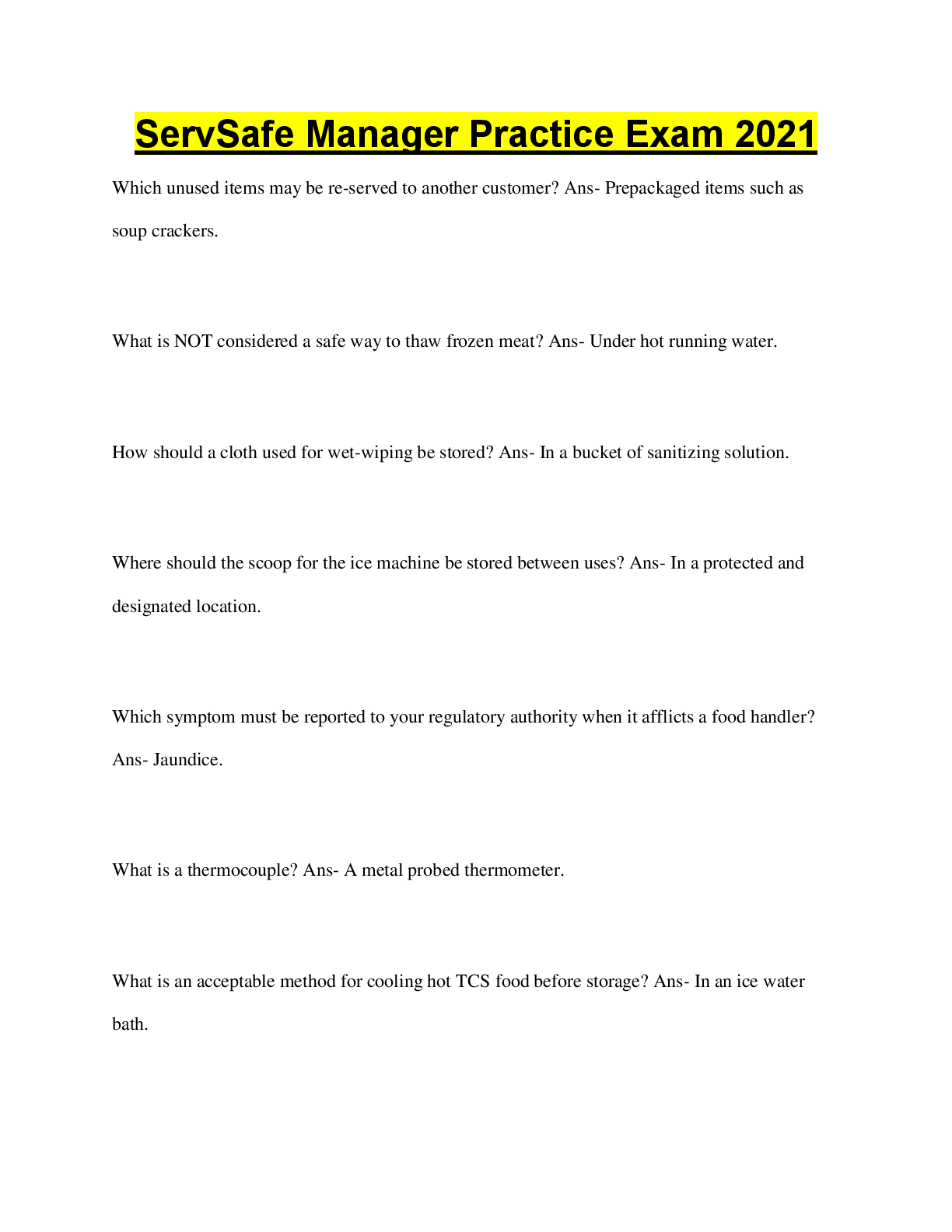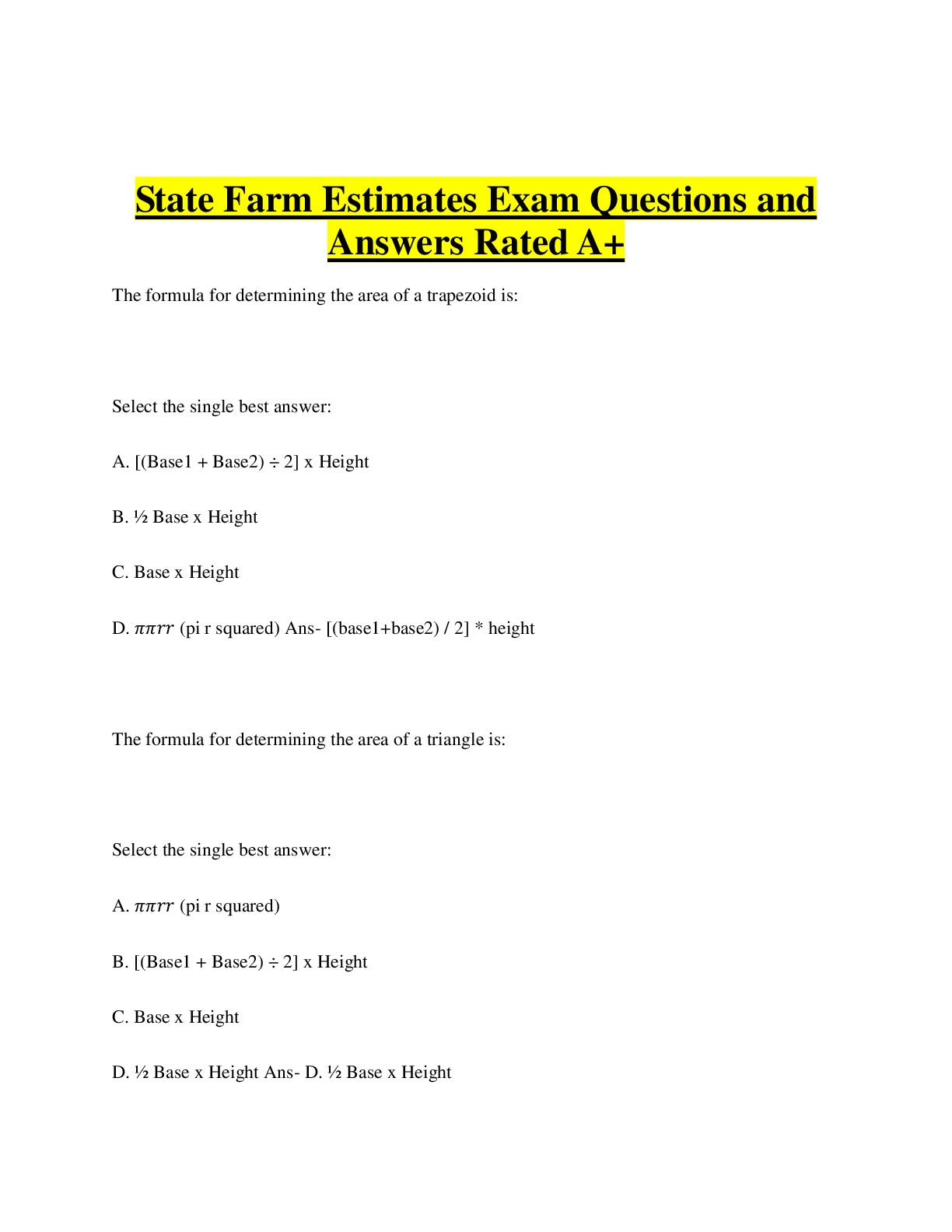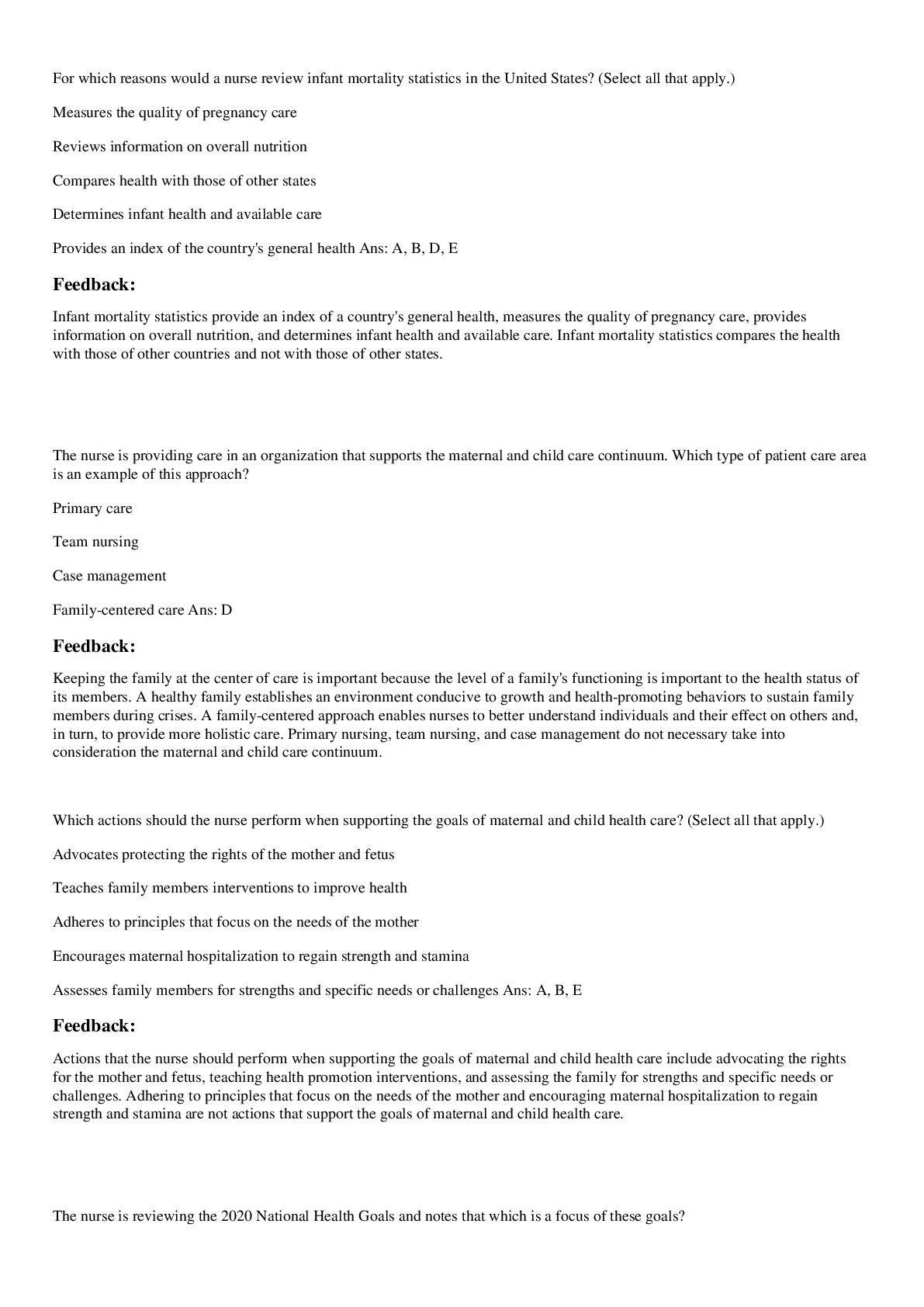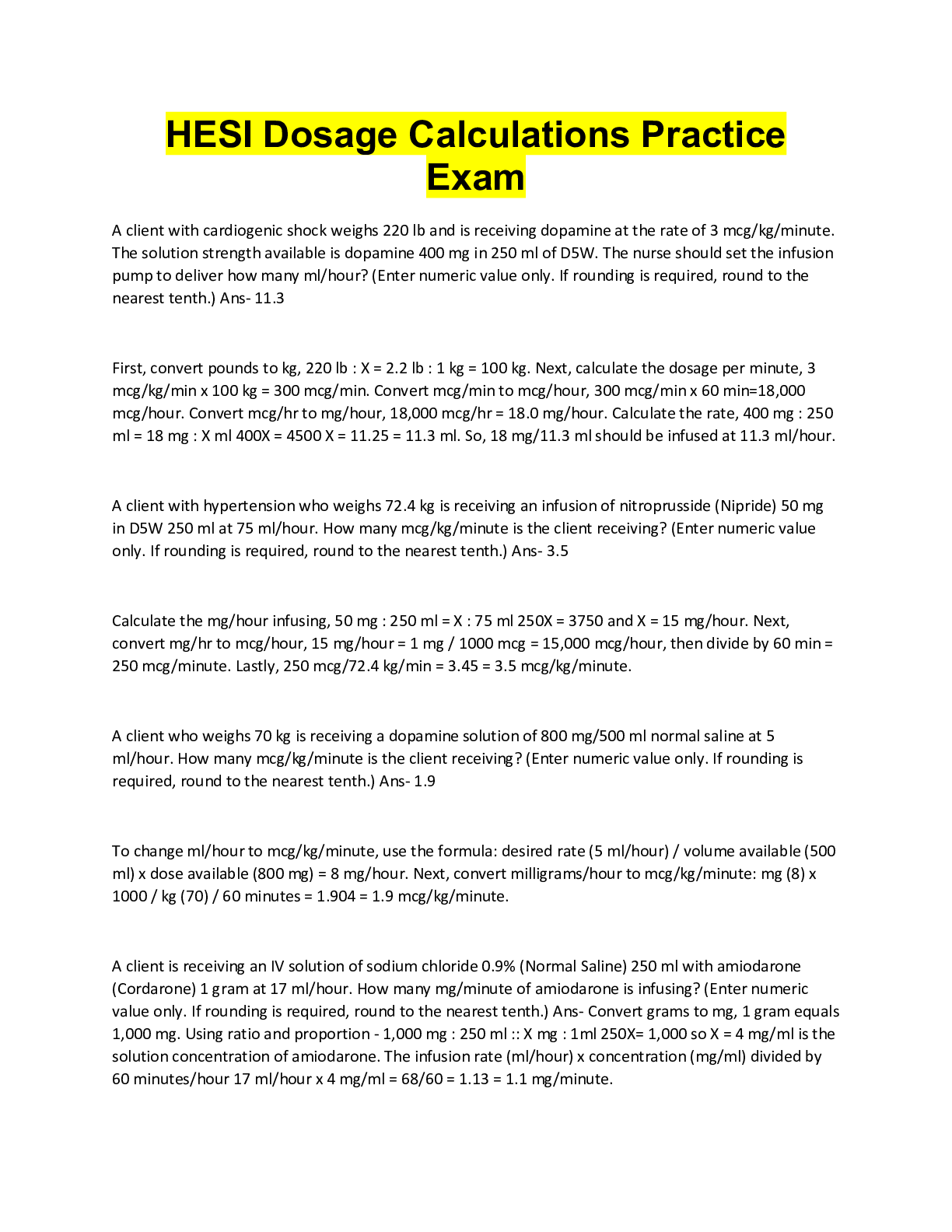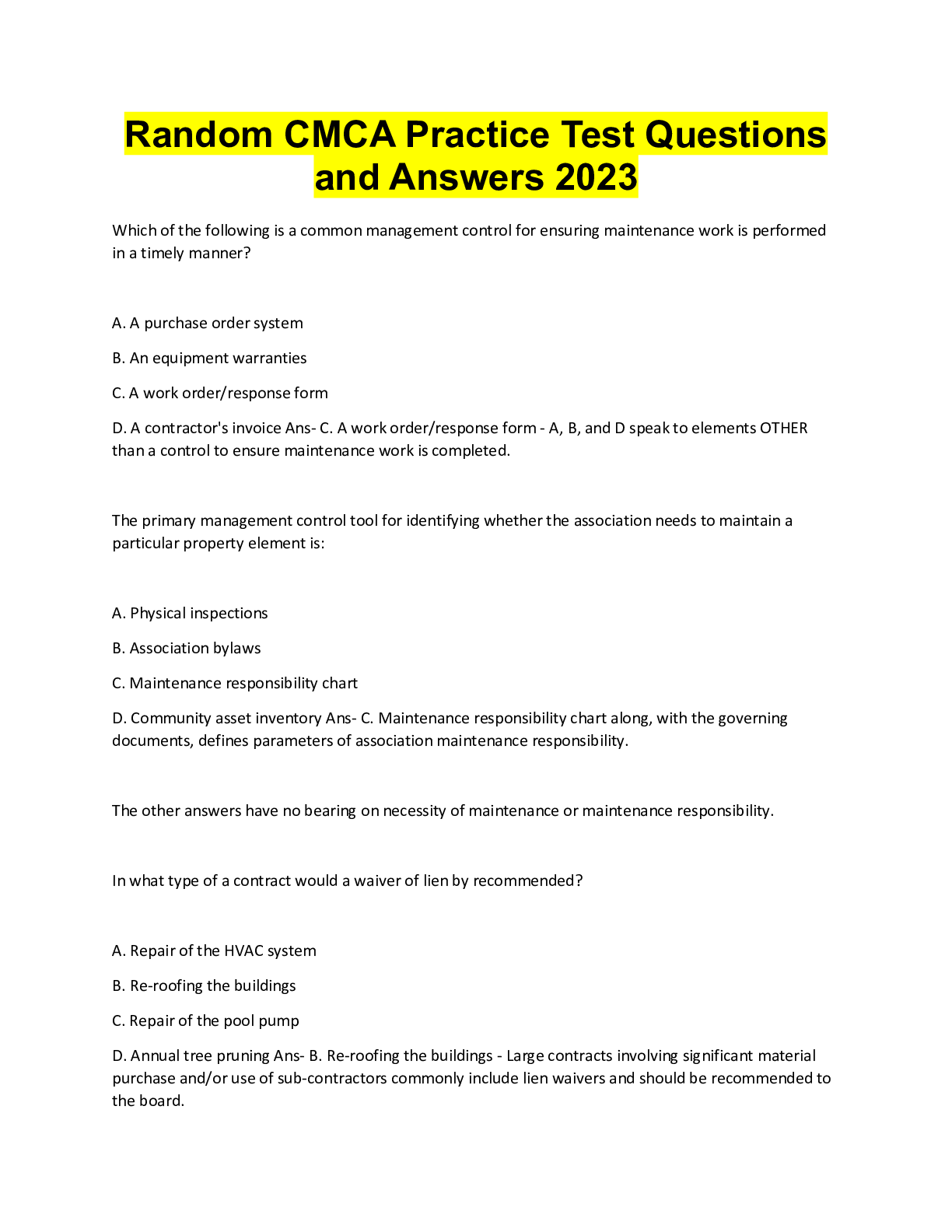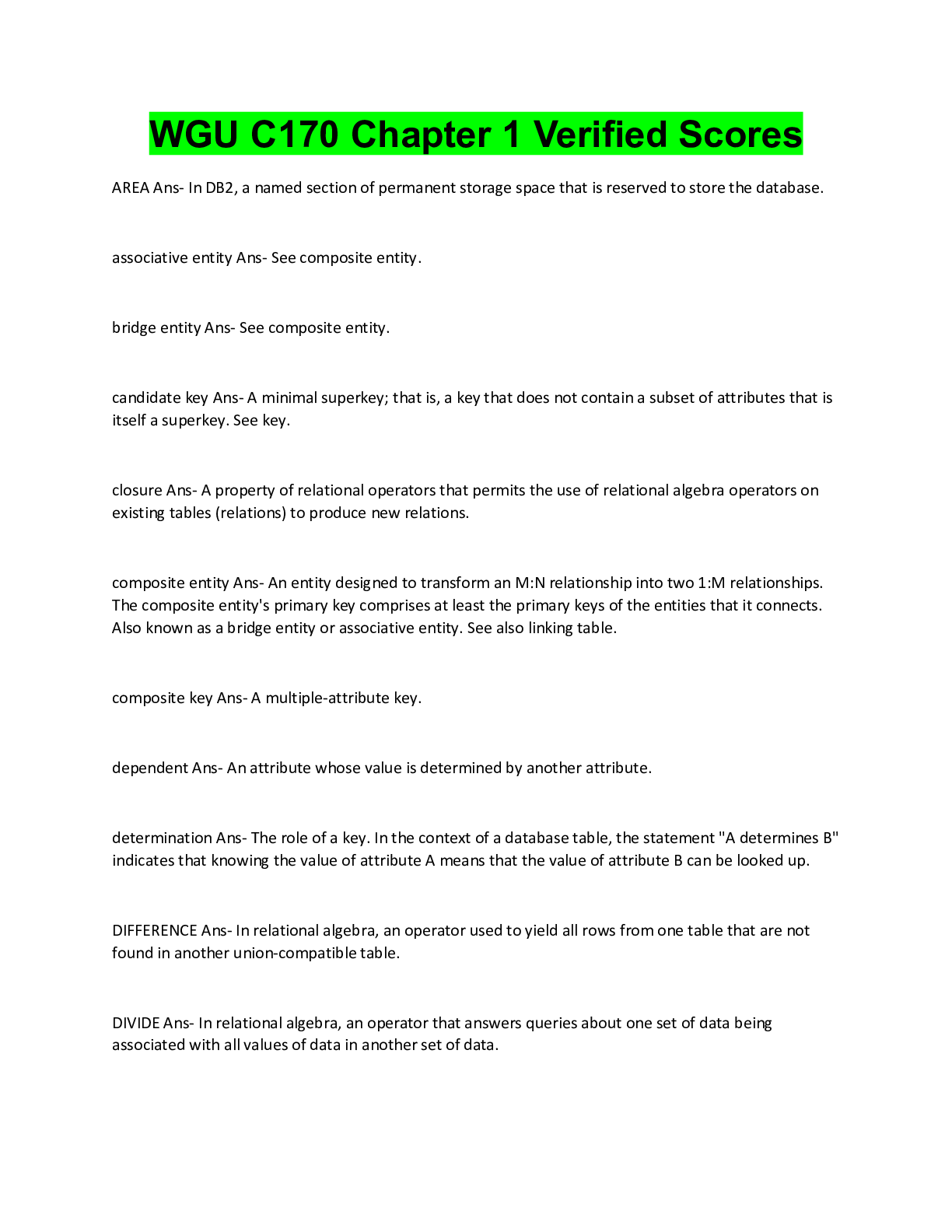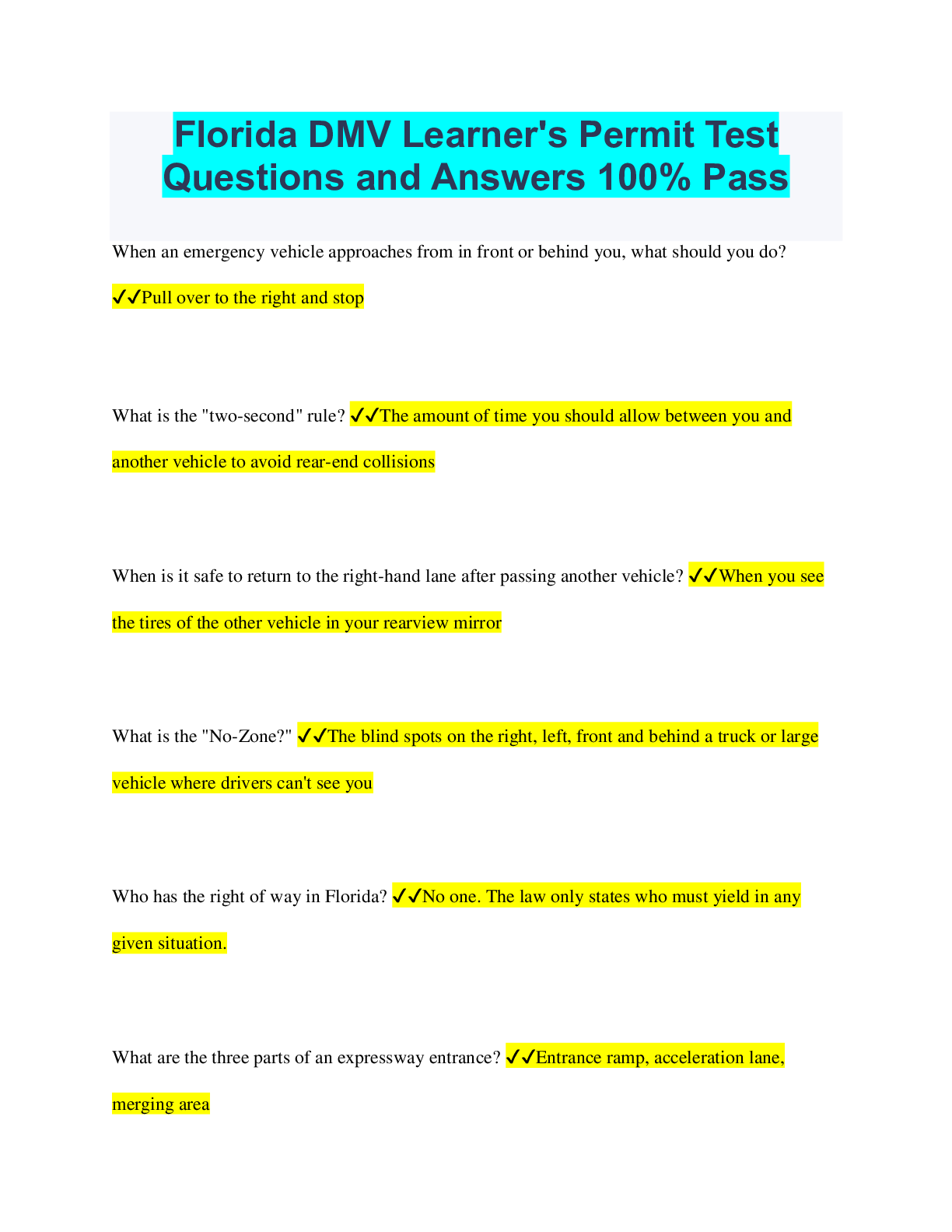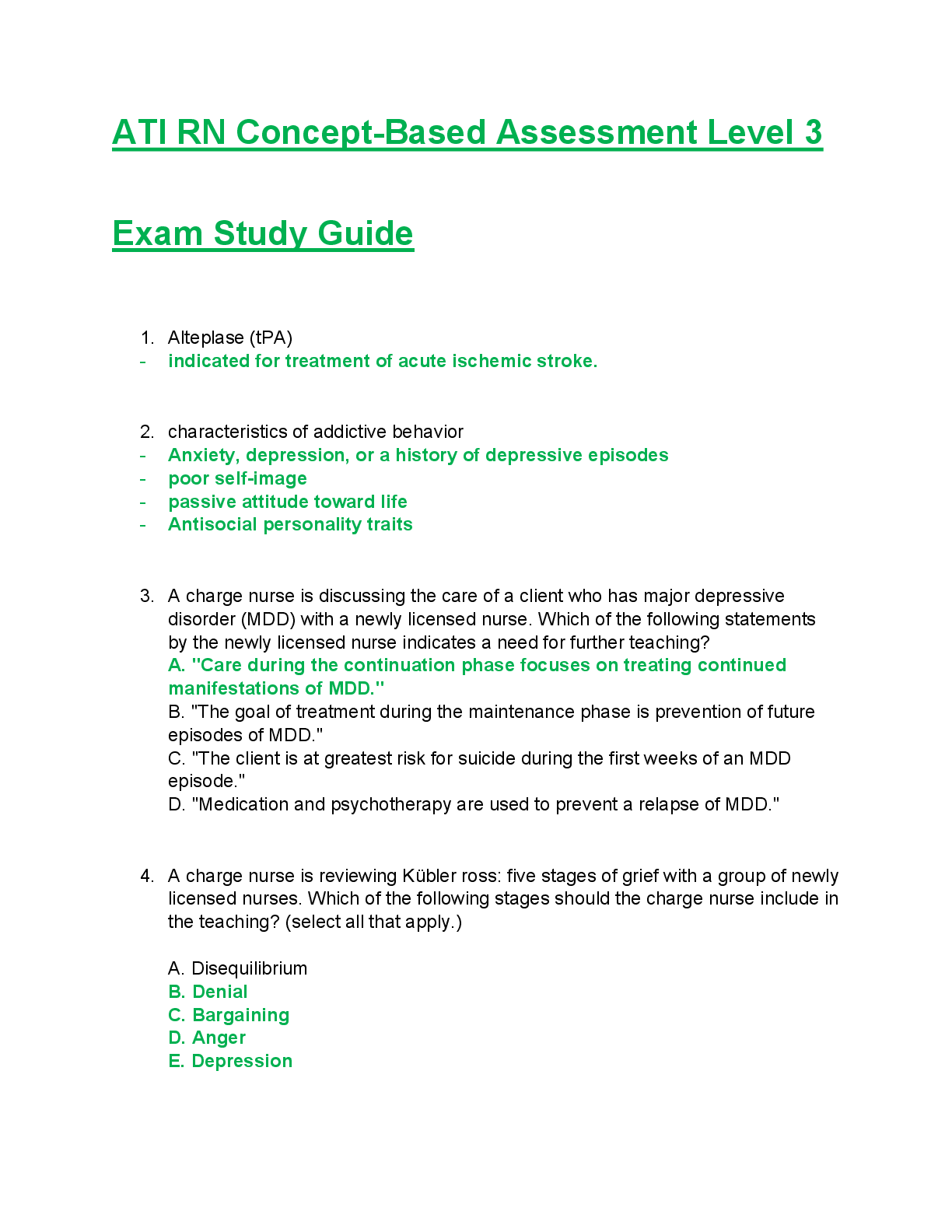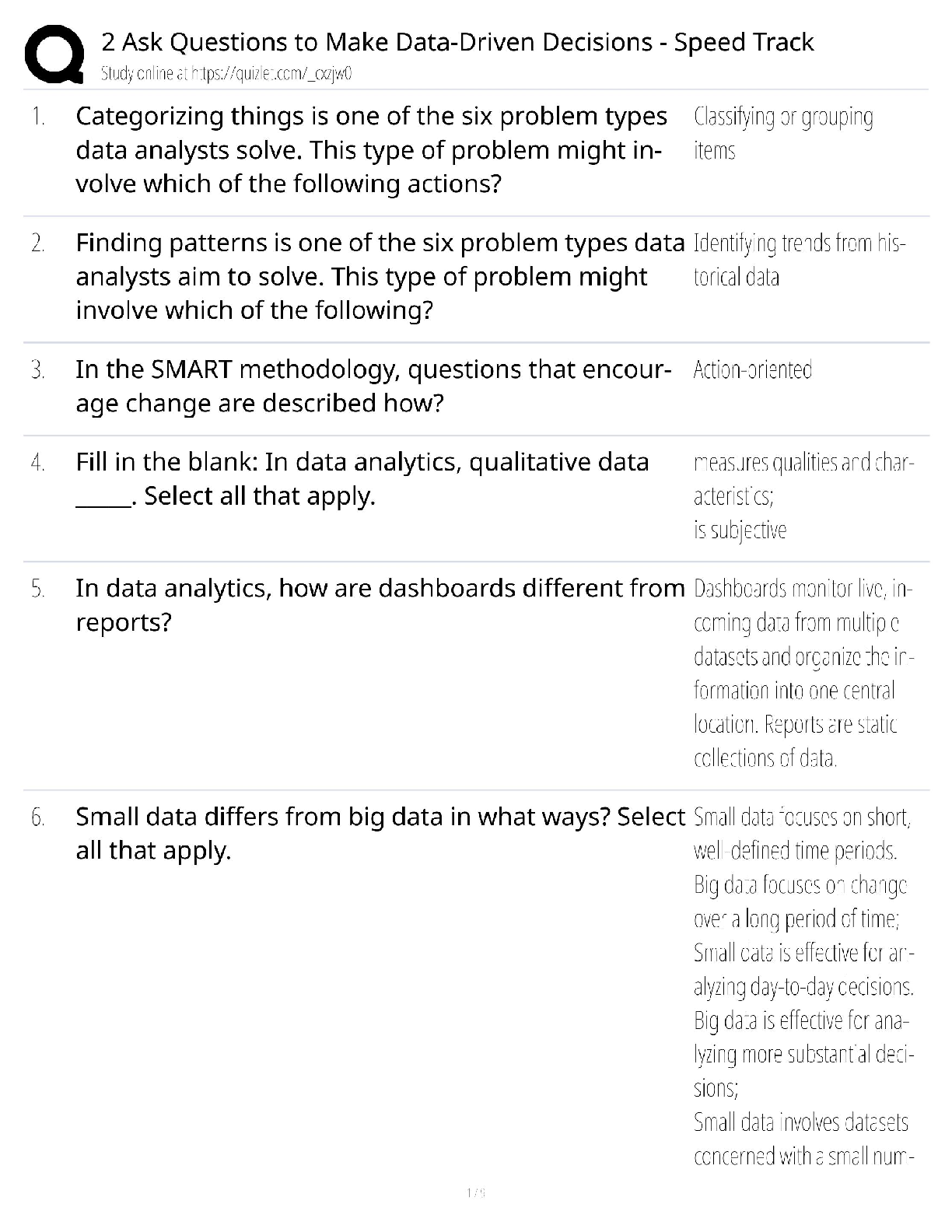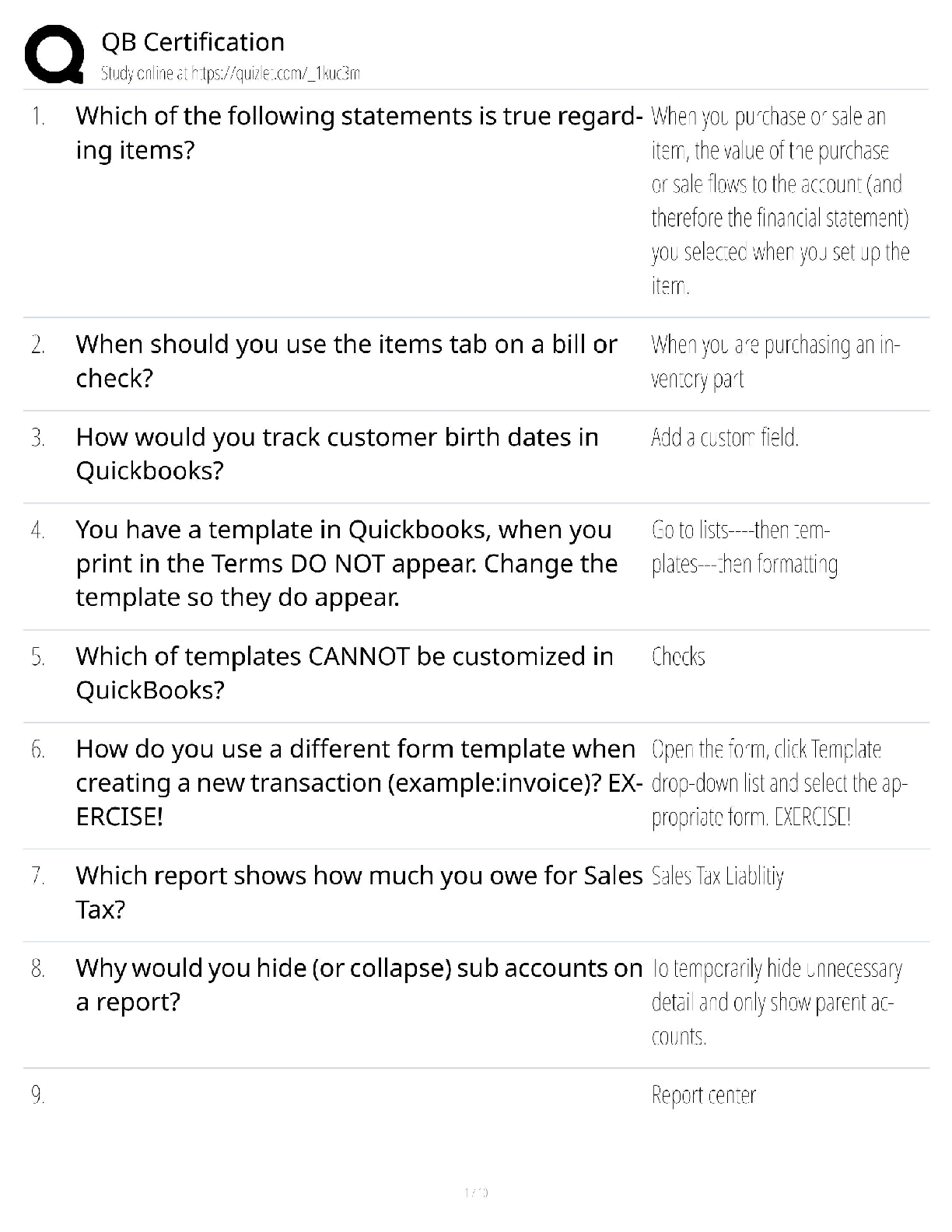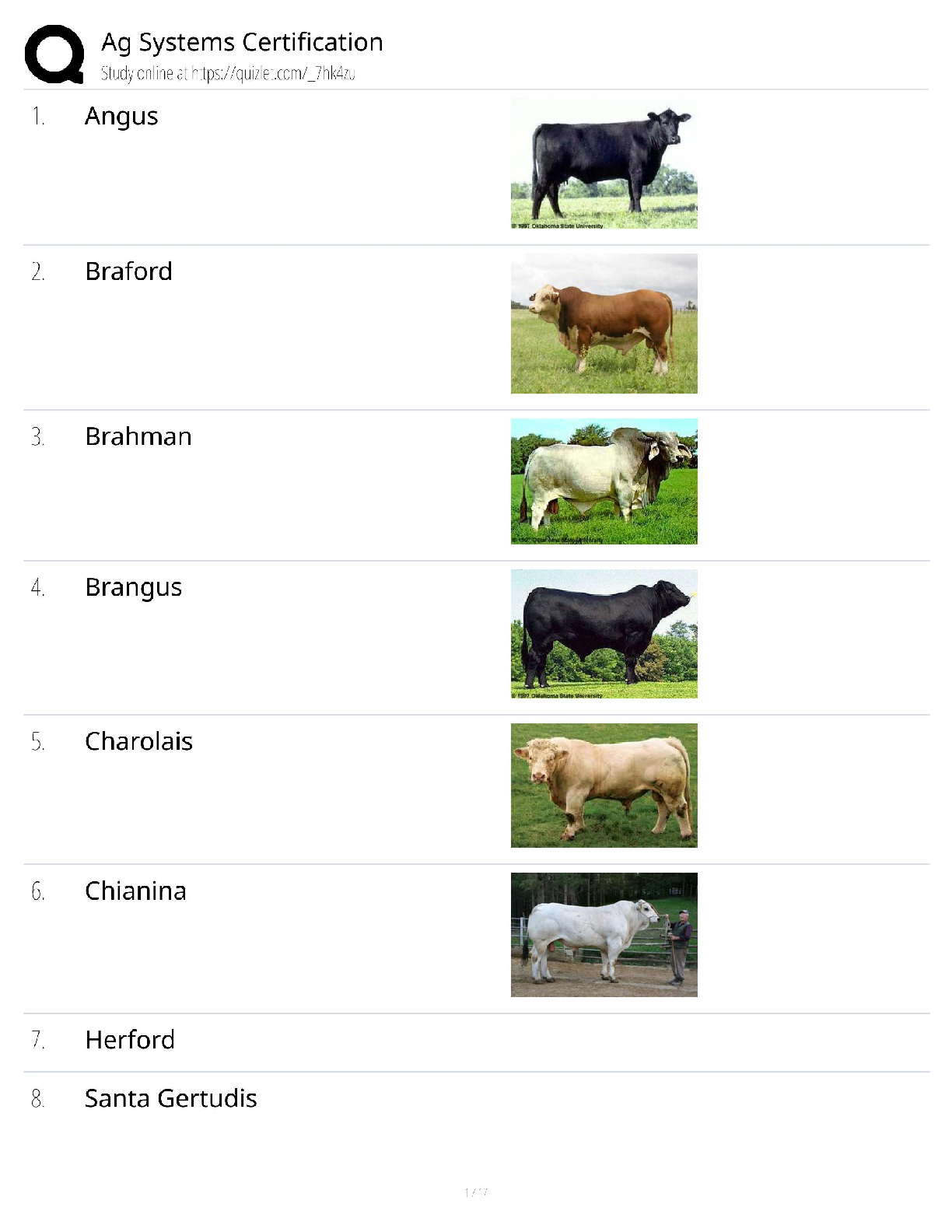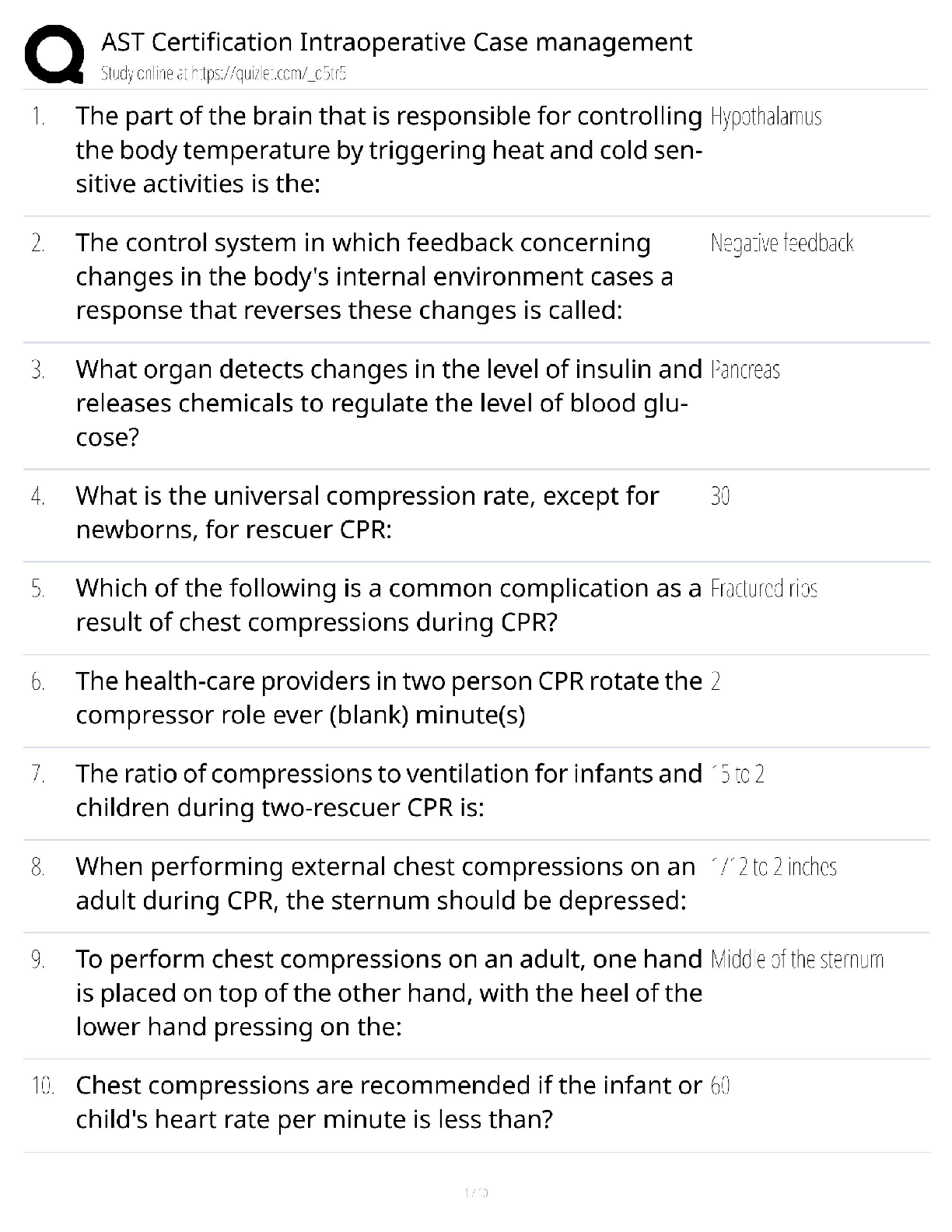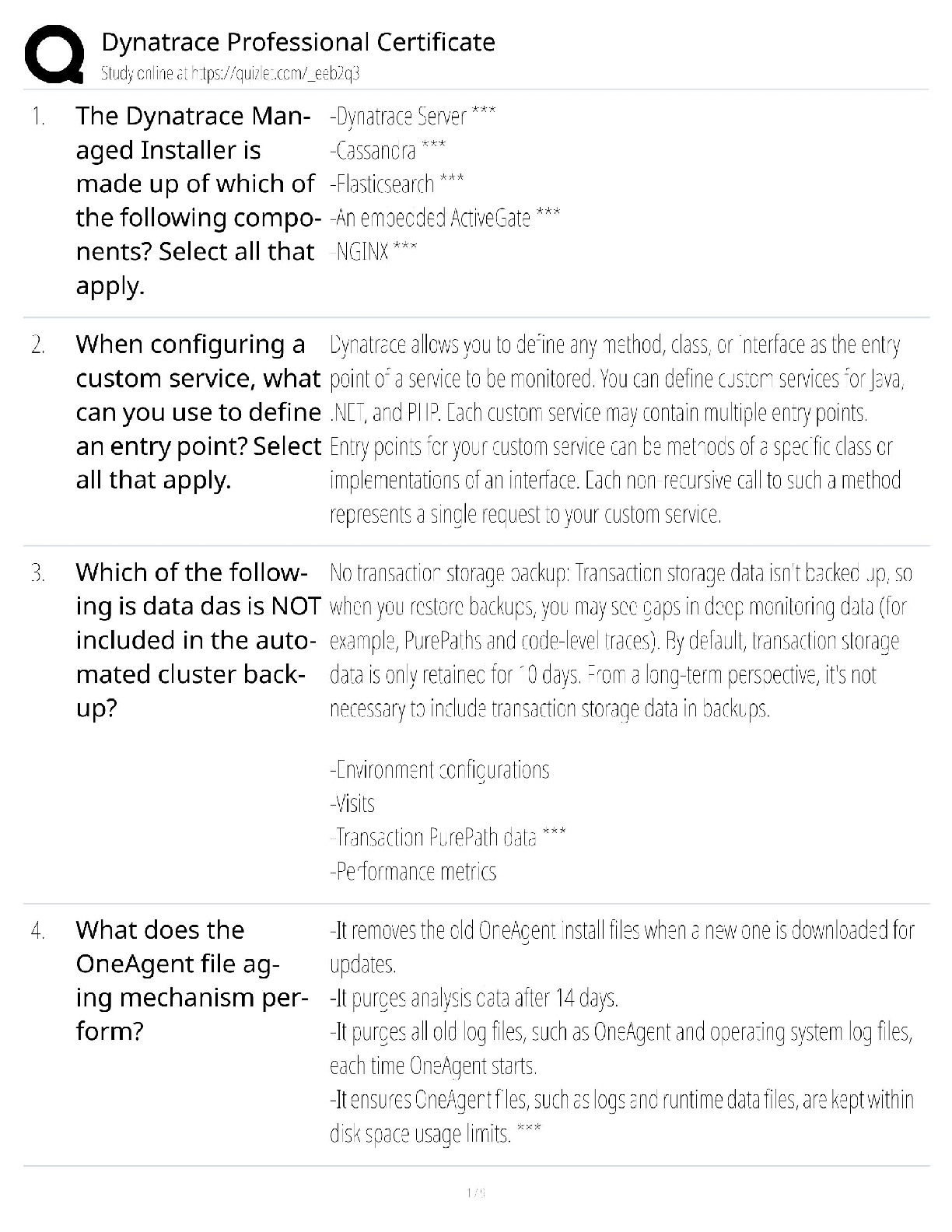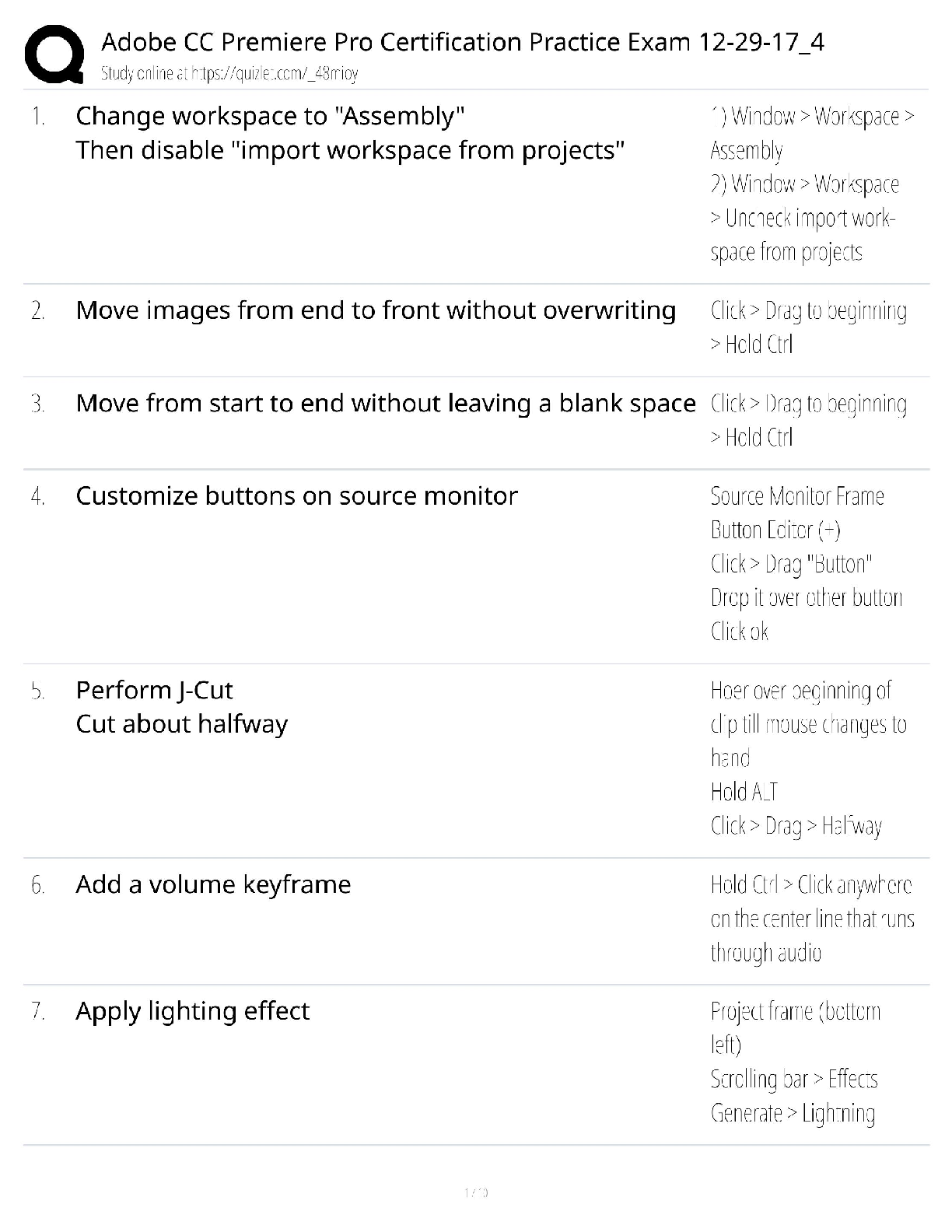English Literature > QUESTIONS & ANSWERS > LETRS Unit 1 Assessment Question and Answers (All)
LETRS Unit 1 Assessment Question and Answers
Document Content and Description Below
b. The Three Cueing Systems model omits or obscures the role of phonology. Ans- What is one important distinction between the Four-Part Processing Model for Word Recognition and the Three Cueing S ... ystems model? a. The Four-Part Processing Model emphasizes visual processes. b. The Three Cueing Systems model omits or obscures the role of phonology. c. The Three Cueing Systems model emphasizes the role of phonology. d. The Three Cueing Systems model omits semantic processing. d. both foundational reading skills and oral language development Ans- Many students at risk for reading problems enter school without exposure to the academic language used in books or preschool experience. These students are most likely to make progress closing the reading and language gap if their classroom instruction emphasizes which of the following? a. oral language comprehension and reading aloud b. attending to context, including semantic and syntactic cues c. matching students with interesting reading material d. both foundational reading skills and oral language development a. early alphabetic Ans- A beginning first-grade student is able to segment and pronounce the first sound in a spoken word. He tries to guess at words by looking at the first letter only. When he writes words, he spells a few sounds phonetically, but not all the sounds. According to Ehri, this student is most likely in which phase of word-reading development? a. early alphabetic b. later alphabetic c. prealphabetic d. consolidated alphabetic b. phonology Ans- A kindergarten teacher is having students listen to three spoken words and identify the two words that end with the same sound. The teacher is focusing on which language system? a. morphology b. phonology c. orthography d. semantics d. Determine if the students need remediation in word recognition, language comprehension, or both. Ans- Considering the Simple View of Reading, what would be the BEST course of action for a third-grade teacher with concerns about several students who have not achieved fluency? a. Observe whether students are able to work on several subskills at once. b. Verify that students have been engaged in independent reading at home for 20 minutes every day. c. Increase demand on students to improve their passage reading rate. d. Determine if the students need remediation in word recognition, language comprehension, or both. a. primary difficulties with phonology, decoding, and word recognition Ans- In any first-grade classroom in a typical school in the United States, approximately one-third of students are likely to score in the "basic" or "below basic" range. The largest proportion of those students is likely to show which characteristics? a. primary difficulties with phonology, decoding, and word recognition b. primary difficulties with phonology only c. primary difficulties with automatic word recognition only d. primary difficulties with language comprehension only b. Reading problems can be treated as easily in third grade as in first grade. Ans- Which of the following statements is FALSE with regard to an effective implementation of a multi-tiered system of supports (MTSS)? a. It is possible for 95 percent of kindergarten students to meet benchmark by the end of the year. b. Reading problems can be treated as easily in third grade as in first grade. c. Progress-monitoring assessments should be brief, curriculum based, and economical. d. Students can learn to read even if there is little help available at home. b. both regular and irregular words Ans- . One important goal of beginning reading instruction is the development of a sight vocabulary that enables the student to recognize a word instantly, without having to decode it. What types of words should make up a student's sight word vocabulary? a. phonetically irregular words b. both regular and irregular words c. phonetically regular words d. high-frequency words b. They can predict which students are at long-term risk for reading failure. Ans- What is the value of data provided by screening measures? a. They can demonstrate the reliability of test results on repeated administrations. b. They can predict which students are at long-term risk for reading failure. c. They can determine which students need a referral to special education. d. They can contribute to teacher evaluations [Show More]
Last updated: 2 years ago
Preview 1 out of 6 pages

Buy this document to get the full access instantly
Instant Download Access after purchase
Buy NowInstant download
We Accept:

Reviews( 0 )
$11.50
Can't find what you want? Try our AI powered Search
Document information
Connected school, study & course
About the document
Uploaded On
Feb 11, 2023
Number of pages
6
Written in
All
Additional information
This document has been written for:
Uploaded
Feb 11, 2023
Downloads
1
Views
217

